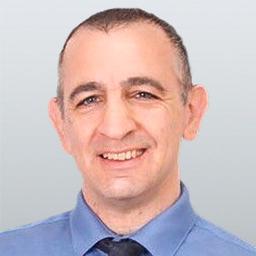The total outstanding debt owed to China is roughly $1.1 trillion—over half of these loans are now due.
News Analysis
Beginning in 2001 and including the Belt and Road Initiative (BRI) that started in 2013, China has invested in nearly 21,000 projects across 165 low- and middle-income countries. The total outstanding debt owed to China is
roughly $1.1 trillion, and over half of these loans are now due—a proportion that will reach 75 percent by 2030.
Initially, these projects were expected to drive GDP growth in borrower nations, with increased economic output enabling them to repay their loans. However, numerous projects have fallen short of completion or failed to generate the projected returns. A notable case in point is the
China-Pakistan Economic Corridor (CPEC), long touted as the crown jewel of the BRI, also known as “One Belt, One Road.”
After a decade and expenditure of $25 billion, the CPEC has yet to deliver on its promises of developing Pakistan’s energy infrastructure and overhauling and connecting Gwadar Port with Kashgar in China’s Xinjiang region. The CPEC would effectively make China both the owner and operator of the port while affording China cheaper trade routes and providing it access to the Arabian Sea. Any real gains to Pakistan have been offset by problems of financing and security, as well as backlash from Pakistanis who increasingly see China as the beneficiary of a project that puts Pakistan deeper in debt while bringing little benefit to locals.
Economists have confirmed that the spillover effect of spending on constructing CPEC infrastructure has been negligible, while the impact on Pakistan’s debt has been tremendous. As of July, Pakistan owes 30 percent of its external debt to Chinese government and commercial banks. To make matters worse, the rupee has deteriorated in value, losing 40 percent against the dollar, thus making debt service payments even more painful. Economic instability during the initial phases of the project has led to delays in project completion, meaning delays in the generation of revenues intended to be used to service the debt. To the chagrin of many Pakistanis, the next phase of the CPEC is about to begin. With it,
more debt rollovers and
additional loans will be added to the existing debt.
Risky Loans
Similar stories can be heard among other BRI nations. A full
80 percent of Chinese loans to the developing world are to countries facing financial distress. This is why the West has accused China of being an irresponsible lender. The problem is exacerbated by high-interest rates and falling local currencies.
In its initial phases, the BRI was synonymous with substantial loans aimed at financing extensive infrastructure endeavors. However, this paradigm has shifted, with Beijing increasingly extending rescue loans rather than solely focusing on colossal infrastructure projects. As China undergoes this transition, many of these rescue loans are being facilitated through collaboration with more conventional financial institutions.
About half of China’s
non-emergency loans are made in cooperation with syndicates, and 80 percent of those are with Western commercial banks, for example, Standard Chartered or BNP Paribas, or with multilateral development banks such as the United States International Development Finance Corporation (DFC) and the European Bank for Reconstruction and Development (EBRD).
Despite this shift of focus, China is still the world’s foremost
source of development finance, outspending any single Group of Seven (G7) country, as well as multilateral lenders. However, it is important to note that the G7 member nations collectively began outspending China in 2021 as they work to create an alternative to Beijing-led initiatives.
Setbacks
At the
BRI summit in October, Chinese Communist Party (CCP) leader Xi Jinping made it clear that China was reducing its investment risk, focusing on “
high-quality” investments. Xi promised $100 billion in new investment, but it appears that most of this money is going into rescue loans, saving old projects rather than starting new ones. The other operational change, which Beijing is less inclined to publicize, is that it is now acting as a debt collector. In many instances, the CCP quietly seizes delinquent borrowers’ foreign currency reserves held as collateral in
escrow accounts.
AidData, a research lab at William and Mary’s Global Research Institute that tracks China’s lending, posits that Beijing is currently focusing on
rescuing troubled projects and distressed borrowers to prevent public backlash and win a diplomatic victory against its G7 competitors. China is now managing
three kinds of risk: repayment risk; environmental, social, and governance (ESG) risk; and reputational risk.
As the world polarizes over such issues as the Russia–Ukraine war or the Israel–Hamas conflict, the Chinese regime is losing diplomatic ground. According to AidData’s assessment, Beijing has had more setbacks than achievements in its soft-power struggle against Washington. The BRI had a 56 percent favorable rating in 2019
versus 40 percent in 2021. According to a recent
Pew Research, most countries already have a more favorable view of the United States than China—and the gap is widening.
The United States has historically refused to try and outspend China in garnering global influence. On average, China has invested $80 billion annually in developing countries, whereas the United States averages only $60 billion. The United States is now stepping up its overseas spending, with the DFC seeing a
15-fold increase in overseas activities. Additionally, the European Union, G7, and other developed nations are beginning to promote Western-led alternatives to the BRI, such as the Global Gateway Project and the Partnership for Global Infrastructure and Investment.







